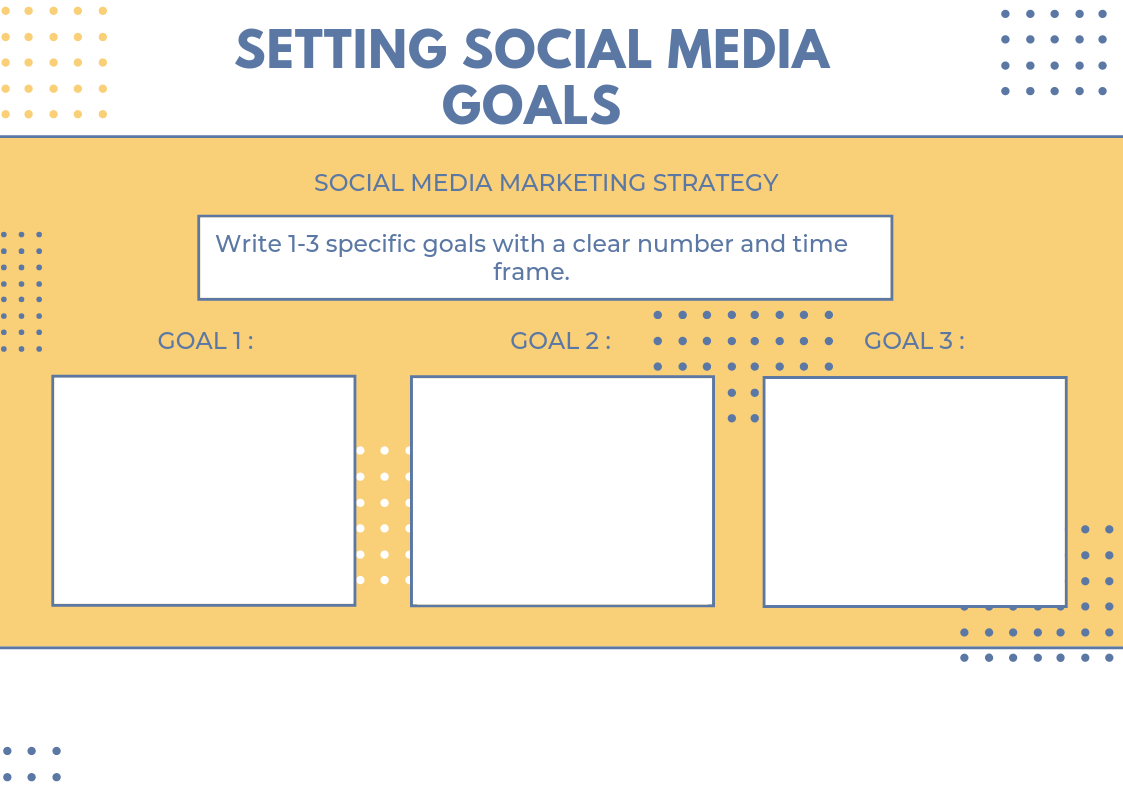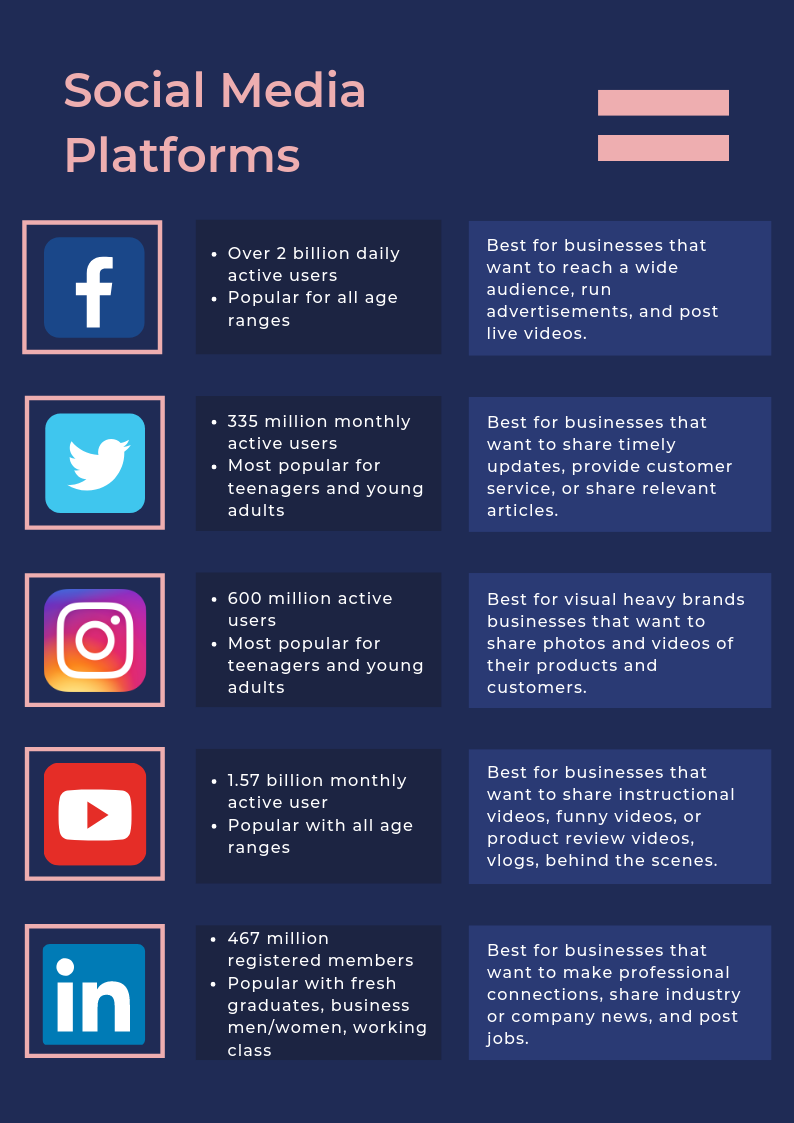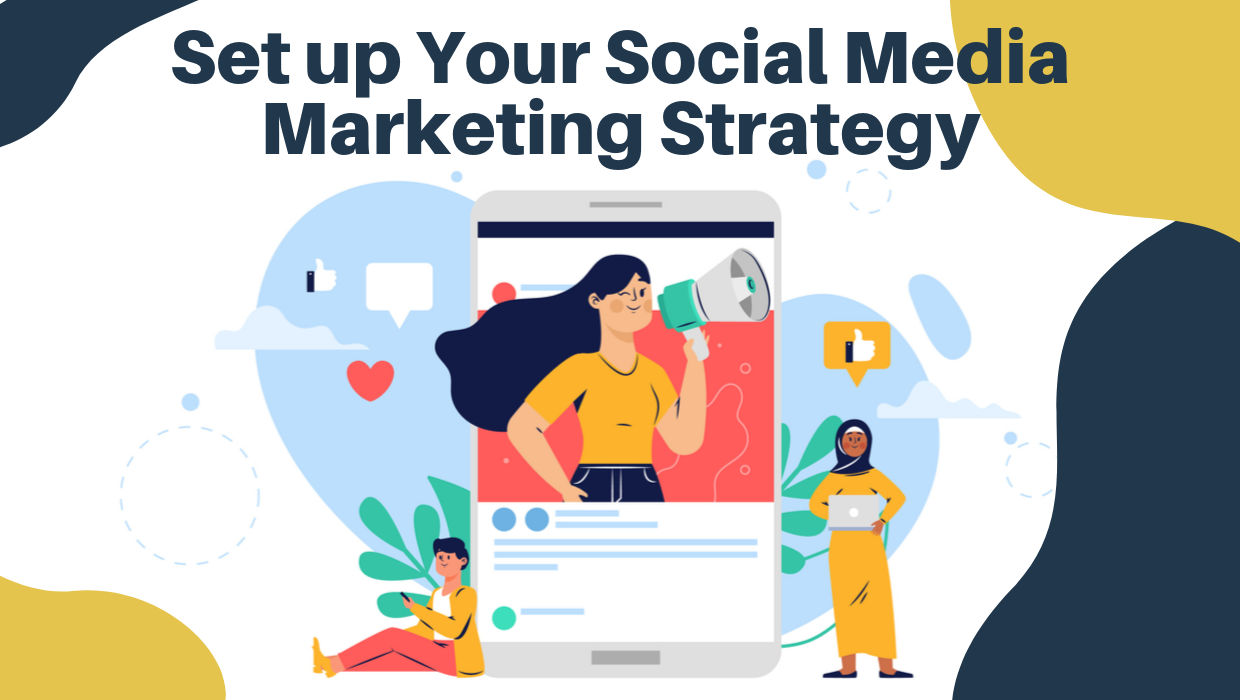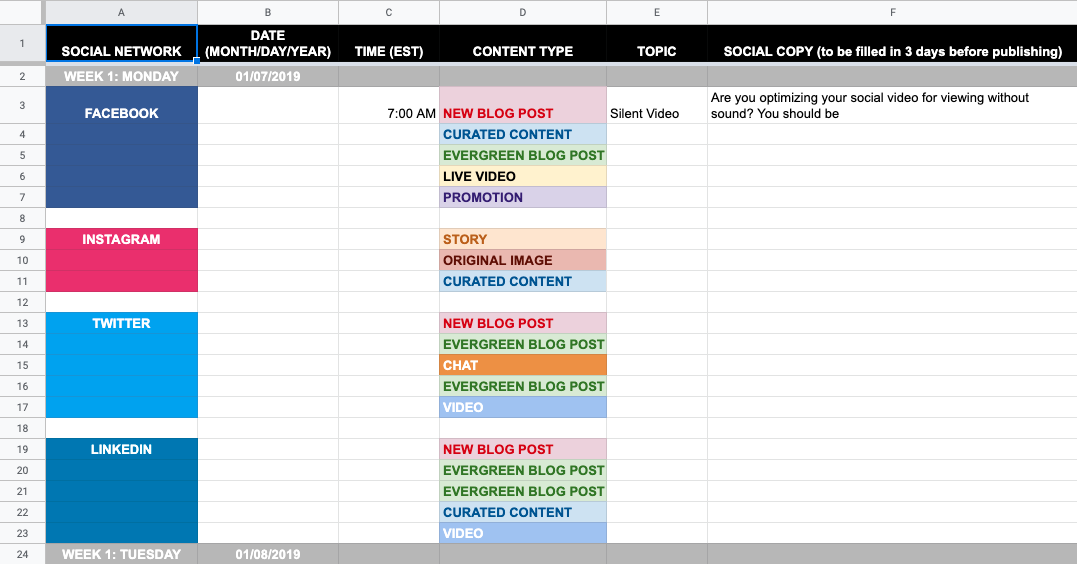Creating a unique and effective social media marketing strategy is a mixture of both art and science. It has to be creative but also backed up by metrics, and experimenting is encouraged. Having an effective social media marketing strategy is crucial to a company’s success in digital marketing. When you have a strategy for social media, it makes the execution more effective because everything you do serves a purpose. Your social media marketing strategy will act as a summary and guide towards the goals you want to achieve for social media. It’s important to keep your goals attainable, measurable, and aligned with your marketing goals. Many brands, both big and small, are already making the most of their social media marketing strategy, so the sooner you can start, the sooner you can compete. In this post, we’ll walk you through four basic steps to create a winning social media marketing plan of your own. All good things start with a plan, and it wouldn’t be much of a strategy without one! This is where you and your team go to your drawing boards to set up a rough draft of your social media strategy. Once you’ve gone through all of your ideas, you can start polishing everything. The planning stage of your social media marketing strategy is divided into two parts: Setting social media goals is all about creating specific, measurable, attainable, relevant, and time-bound goals. Depending on your business, you are likely to have different goals. Make sure the goals you want to achieve are in line with your business. Here are five general social media goals you can use as a guide: Look at the goals above and identify which ones suit your business best. Once you’re done, you can move on to the next step of the planning process. Choosing the right social media platforms to use is crucial when it comes to your social media strategy. It all starts with understanding your target audience. You have to know which social networks your market uses the most so that you can focus your strategy on that. Always think about your consumers when choosing which social media platforms to use. Here’s a quick infographic to help you decide. Once you’ve chosen which platforms you’re going to use, you’ll have to create your business accounts. It will only take you a few minutes to get everything ready, and the best part is that they’re all free! Now that you’ve got all of your accounts set up, you can move on to creating content. The main reason you’re creating content is to establish and build a connection between your business and your audience. This is your chance to relay your message and your story to your audience. You can demonstrate your company’s values through the content you produce. But before creating content, you’re going to need a team to develop it. Videographer/Video editor – Research shows that 51% of marketers worldwide name video as the type of content with the best ROI. Of course, everyone has a smart phone with great camera capabilities, but if you want to position your business as highly professional, we recommend booking a videographer for a couple hours a month. You can create content in batches to post throughout the month. Photographer – Easier than video, and also highly engaging if done well – don’t underestimate the power of photos! Consider acquiring the services of a local photographer every once in a while – you’ll get tons of ready-to-go social content, which takes the pressure off of you! Copywriter – Anyone can write about their product or service, but not everyone can write in a way that sells. Plus, trying to come up with content day after day after day will get tiring – even the most passionate business owner can run dry on social media content ideas! Having a writer on your side can help you express your message in a way that connects with your audience and gets you closer to your goals. Visual artist / Designer – Have you seen any of the cool graphics and illustrations going around social media? Visual artists are the ones responsible for those creative and unique illustrations that also promote your product or service. If you want a more customized feel to your content, find a designer to help you out. Once you know who’s going to be helping you and what you’ll be doing yourself, you can decide what content to create. Here are some ideas. Infographics – Did you know that people share infographics 3x more than any other type of content? Infographics are a visual and engaging way to present information to your audience. Their visual appeal encourages you to do the work of reading because of the fun visuals and illustrations. Interactive Content – We’ve all taken a few quizzes we’ve found on social media, despite the fact that they offer no real value other than entertainment. Quizzes are an example of interactive content. Interactive media is a two-way form of content where users do more than just consume it. Content That Evokes Emotions – We’ve discussed this in a previous blog post, but we’ll say it again. Posts with higher emotional value get more shares. Emotion is a universal language, if you share positive content, you’ll get positive responses. No matter what type of content you’re going to post, always appeal to your market’s emotions. Content With Images/Videos – With our attention spans getting shorter, we’re more likely to like and share content that has videos or images because it’s easy to consume quickly. Focus on high quality images and video to get people to stop mid-scroll to look at your content. Blog Posts – There are many kinds of blog posts you can make. Some of the most common are: lists, how-to’s, what posts, and why posts. Blog posts that have lists are the most shared out of the four. They’re predictable, they promise quick information, and they’re organized nicely. After you’ve gathered your team and decided what type of content you’re going to post, you can start sharing! Mindlessly posting content on social media is a big NO for businesses. Yes, publishing your content is as easy as hitting “SHARE”, but just putting content out there and hoping it works isn’t the best use of your efforts. There are many more factors to consider before actually posting your content. You need to know the perfect times and days to post your content to get the most out of it. This is why you need to know your consumers. Research the times they’re usually online and active on social media, then schedule the dates of your posts. This is where your content calendar comes in. A social media content calendar is a guide to help you consistently post quality content at the right time and date. Social media agencies use them extensively to keep their accounts consistent and organized. Consistency is key on social media, and not just for posting. We recommend allocating time every day to respond and engage with your followers. To get organized, simply download one of the many content calendar templates available online or create your own spreadsheet on Google Sheets. Start filling in your calendar with the different categories of content you want to post, spreading out the different types across the week or month. Follow the 80/20 rule when it comes to posting promotional content: this means that 80 percent of your posts should be useful, educational, or entertaining, and 20 percent can be sales-driven, self-serving, and promotional. It’s not a requirement for you to post on social media on a daily basis – it’s okay to skip a day or two. You can also reuse some content if you’re active on multiple channels, but make sure the content is customized for that platform and audience. For example, if you post a link on Instagram like you did on Facebook, it’s not going to be clickable. And all of your Twitter hashtags don’t mean much on Facebook. Get to know each platform well, or risk your business looking unprofessional and a little out of touch. The noise on social media is so loud that is becomes difficult to stand out. There are several ways you can get attention on it, like going viral, or becoming an influencer. However, those options are unrealistic for most companies. Brands don’t have the time to try to go viral, or build a following as an influencer. That’s why we’ve listed ways you can promote your social media accounts online. Each platform has its advantages, but the best platform for you will come down to your specific industry and a little bit of trial and error. Facebook, Instagram, and Google all use PPC advertising, or pay-per-click. This means that you’ll only pay for the clicks you get on your ad, not the views. Facebook Ads – Facebook is world’s largest social network. Because of this, when you advertise on it, you can get very specific with your audience. You can target the people who see your ad beyond their age and location to factors like interests, things they’ve clicked on in the past, and position at their company. Instagram Ads – Similar to Facebook Ads, Instagram advertising lets you target your audience and reach more people than your organic posts would. You can create a new ad or sponsor a post you’ve already made to reach new audiences. Google Ads – Google Ads is another form of PPC advertising. You’ll only pay for the clicks you get and for the amount you bid on keywords – it’s a small cost compared to the revenue you get from these ads. Google Ads also gives you the power to customize your ads. You can choose when, where, and to who you want your ads to show up. Click here to learn more about Google Ads. Youtube Ads – Advertising on YouTube is very different from running a PPC or paid social campaign. You have three different video ad categories to choose from, so there are specific creative constraints. But, even with the creative constraints, YouTube is still the second-biggest search engine after Google, with 1.9 billion monthly active users. With that many people using the platform and fairly inexpensive advertising costs, Youtube ads are still worth a try. So there you have it! Everything you need to know to get an effective social media campaign rolling for your business. It may sound like a lot right now, but it really comes down to the 4 simple steps: Plan, Create, Publish, and Promote. Focus on one step at a time and you’ll have a cohesive social media marketing strategy in no time! 
Set Goals for Your Social Media Marketing Strategy

Choose the Right Social Media Platforms


Who You Need On Your Team to Create Content:
What Kind of Content to Create


Creating a Content Schedule

How & Where to Promote on Social Media
Conclusion
Related Articles:
With Just Digital,
Success is Easy-Peasy Lemon-Squeezy.
When life gives us lemons, we generate results. Contact us today and we can start making lemonade.








